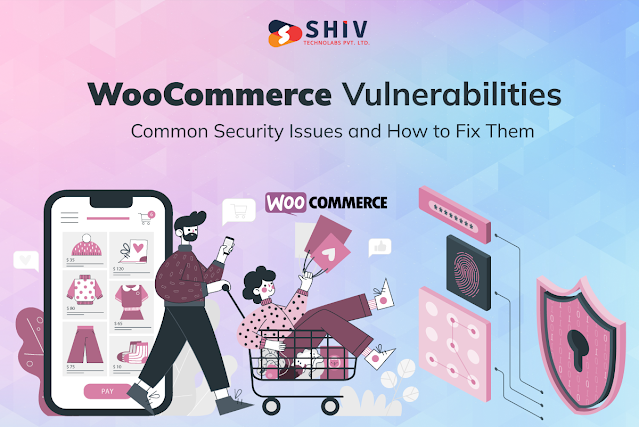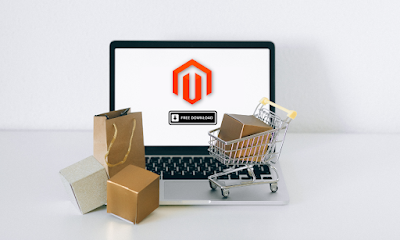WooCommerce Vulnerabilities: Common Security Issues and How to Fix Them
WooCommerce powers over 28% of all online stores, making it a prime target for hackers and security threats. Store owners have a responsibility to keep their sites secure and protect customer data.
This article provides an overview of the most common WooCommerce security issues store owners face and how to address them. From outdated software to weak passwords, we outline the risks each vulnerability poses and the steps you need to take to fix them.
Ensuring the safety of your store and customers should be the top priority, making it essential to dedicate time to thoroughly examine each section and put into action the suggested remedies. With some ongoing maintenance and monitoring, you can avoid becoming another WooCommerce cyberattack statistic.
Staying secure is a continuous process, not a one-and-done checklist. But with the right patches and best practices in place, WooCommerce store owners can rest easier knowing their sites are protected and customer data is safe from the most prevalent threats.
Common WooCommerce security issues along with the solutions to tackle them
1. Outdated WooCommerce Version
One of the most common vulnerabilities for WooCommerce stores is an outdated version. As WooCommerce releases updates, they patch security issues and fix bugs in the previous versions. Running an outdated version of WooCommerce leaves your store open to exploits that have already been fixed in newer releases.
To check the WooCommerce version you are using, log in to your WordPress admin dashboard - go to the Plugins section - Installed Plugins. Locate WooCommerce in the list of plugins and check the version number listed under the name.
2. Weak Passwords
3. Insecure Payment Gateways
- Enable SSL on their store. SSL encrypts data between the customer and the store, preventing hackers from accessing it. Without SSL, payment data and other sensitive information are transmitted in plain text.
- Choose a reputable payment gateway. Some recommended options for WooCommerce include PayPal, Stripe, and Authorize.net. Lesser-known gateways are more prone to security issues and should be avoided.
- Enable additional security features. Things like 3D Secure, address verification, and CVV verification add another layer of protection. They help verify the customers credentials.
- Keep payment gateways up to date. Payment gateways frequently release security patches and updates. Store owners should enable auto-updates when available and regularly check for the latest versions to install.
- Never store full payment data. Only store the last four digits of credit cards and expiration dates. Full payment data should never be stored in the database or anywhere else.
- Use strong passwords. Payment gateways should have unique, complex passwords that are changed regularly. Reusing the same password across sites is a major security risk.
4. SQL Injection
- Use Prepared Statements or Parameterized Queries: Instead of directly embedding user input into SQL statements, use parameterized queries or prepared statements provided by your programming language or framework. These techniques ensure that user input is treated as data and separate from the SQL logic, preventing malicious SQL injection.
- Implement Input Validation and Sanitization: Validate and sanitize user input on the server-side to ensure it conforms to expected formats and limits. Use whitelisting or strict input validation to allow only specific characters or patterns. Remove or escape characters with special meaning in SQL, such as quotes or semicolons.
- Least Privilege Principle: Assign the minimum necessary privileges to the database user account used by your application. Limiting privileges reduces the potential damage that an attacker can cause even if SQL injection occurs.
- Avoid Dynamic SQL Queries: Refrain from constructing SQL queries dynamically by concatenating user input with SQL code. Dynamic SQL can be harder to secure effectively and increases the risk of injection vulnerabilities. If dynamic queries are unavoidable, ensure proper validation and parameterization of the input.
- Keep Software and Libraries Up to Date: Regularly update your web application framework, libraries, and database software to benefit from security patches and enhancements. Stay informed about any security advisories or updates related to SQL injection vulnerabilities in the software you use.
- Implement Web Application Firewall (WAF): Consider utilizing a WAF that includes SQL injection protection. A WAF can help detect and block suspicious SQL injection attempts by analyzing web traffic and applying predefined security rules.
- Educate and Train Developers: Foster security awareness among your WordPress development team. Educate them about secure coding practices, including proper handling of user input, parameterized queries, and secure coding guidelines.
5. Cross-site scripting (XSS)
- Keep your WooCommerce plugin and WordPress core updated to the latest versions. Developers frequently release updates that address security issues, including XSS vulnerabilities.
- Utilize a reputable security plugin, such as Wordfence or Sucuri, to provide an additional layer of protection against XSS attacks. These plugins can detect and block malicious code injection attempts.
- Apply input validation and output sanitization practices to user-generated content, such as comments, product reviews, or form submissions. WordPress provides various functions and filters, like `esc_html()`, `esc_attr()`, and `wp_kses()`, which can sanitize and validate user input.
- Avoid using unsanitized variables directly in your code. Instead, utilize proper escaping functions provided by WordPress, such as `esc_js()`, `esc_url()`, or `esc_html__()`, when outputting data to the browser.
- Be cautious when using third-party themes or plugins. Choose reputable sources and regularly update them to minimize the risk of vulnerabilities. Verify the developer's track record and reviews before integrating any new components into your WooCommerce site.





Comments
Post a Comment